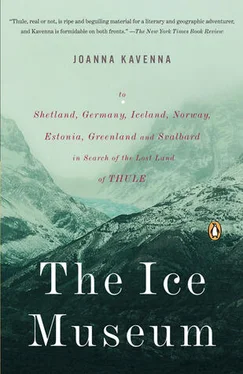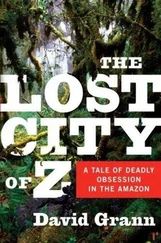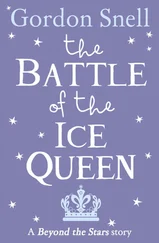In the kitsch inn by the marketplace, the bar was dark and empty when I arrived back. The cluttered bedroom seemed small and hot. I pushed the embroidered covers off the bed, and stood looking out of the window at the quiet streets. Bells chimed from the church towers. The stalls were packed up for the night, their flowers and fruit under plastic sheeting. I sat up in the hotel room. I was searching around on the Net, surfing through all the contemporary madness about Thule, madness of a Sebottendorff strain. There was a horde of contemporary racist societies lurking on the Internet, peddling a poisoned version of Thule. Typing in “Thule Society” released a wild array of lunatics in love with the past, the Nazi Age, as they saw it. A Thule Net had been set up, to foster cyber clusters of the rabid, struggling with the basics. The Thule Gesselschaft, they frothed on their sites, spelling everything wrong, was founded under the initiative of Baron Rudolf von Sebottendorf. The Thule Gessellschaft, they added, in the same article, beginning to grow more confused, was created by von Sebbotendorf in 1908 one site said, or 1910, said another, or 1919, said a further. The GREAT, the INVINCIBLE Von Sebetondof, they wrote—Sebettenduff was their hero, though they just couldn’t quite remember his name—and in the name of the Thule Gessleschaft, they wrote, Sebetendorf bought the newspaper the Vulkishcer Beabagger . Thuel Gessollshlock was the mother of Nazism, they concluded, with learned authority. Then, casting aside even a failing attempt at the facts, they would lurch into the violence of desperate fantasy. Hitler could not be dead, they said, wiping their tears away; it was impossible. So, they imagined, at the end of the war, Hitler had escaped in an aeroplane to Thule, a place, they generally seemed to think, a few miles away from the North Pole. On this frozen island, Hitler had been living for fifty years, having evidently become immortal at some stage in his escape-flight, a gatecrasher, an intruder in the classical dreamland. Deprived of the audience he lived off—they seemed to have made a living hell for their hero, without intending it. In their legend, he became a lonely madman on an island, like the hermits the Irish clerics found in the far northern ocean. A tyrant standing on a rock, commanding the clouds.
There were other sites with a pseudo-mystical bent, where the self-appointed clerics of the vapid Thule cult castigated the ‘ ennemis de Thule ,’ as one Frenchman wrote, in his chaotic study of Thule, the enemies of Thule who had replaced ‘ancient rituals’ with a ‘foreign rite,’ he added. The French were the original Aryans, he claimed, and his was a masochistic Aryan-lust, because the Saga obsessives would hardly have hailed him as a Viking hero. There was a picture of him on his site: a small Mediterranean man with a shock of black hair and a black moustache. Hitler and his brown-haired friends would have cast him out, this Frenchman muttering about the eternal religion of Thule, misunderstanding ancient ambiguities.
For the Internet ranters, as for Sebottendorff in 1918, there was an innate correlation between Germanic and Norse mythology, Thule itself and Nazi history. These sites were full of runes and semi-pornographic pictures of Viking maidens and muscular Viking men. I was thinking of a man like William Morris, fascinated by the Vikings because he thought they had created an early form of democracy. He had romanticized them, ignoring the Viking tendency to brutish violence, dwelling instead on their simple villages and intricate rule of law. He had thought the Icelandic Vikings were escaping from a tyrant into a community they created themselves. In the early twentieth century these strains of Germanic history were entwined with nationalist independence movements in Scandinavian countries, in Norway and Iceland. In interwar Germany, they were corrupted into the ‘Aryan’ obsession of the Nazis. The Thule Society sites on the Internet plastered borrowed images across their Thule Society pages, claiming them as a historical justification for their hatred. For extremists, these associations still remained. They still thought Thule was a code word for their ‘Aryan’ cult.
There were tenuous dreams which survived centuries: the classical dream of a land at the ends of the world, the romantic dream of the perfect landscape, a pure land, unchanged from Saga times. These dreams fascinated the German extremists, the Saga worshippers on Aryan tours, and they entwined the northern lands with their myth of the pure Germanic race. The Thule Society was disbanded, but the obsession with an ‘Aryan’ Empire created a cult—the SS. Heinrich Himmler, the leader of the SS, believed that German blood, or Nordic blood, was the ‘best blood on earth.’ The SS, he explained in a decree, was ‘an association of German men of Nordic determination selected on special criteria.’ His goal was ‘the hereditarily sound, valuable extended family of the German, Nordically determined type.’ He was certain that in hundreds of thousands of years this Nordic blood would still be the best. After 1932, all SS marriages had to be approved by Himmler and his men, and were only permitted if prospective brides conformed to SS ideas about ‘race and hereditary health.’ The SS had its own variety of inclusiveness: Himmler threw its doors open to suitable blonds of any ‘Germanic’ nation. Himmler took ‘Aryan’ recruits to the SS from Yugoslavia, Belgium, Denmark, the Netherlands and Norway. Himmler wanted to ‘reclaim’ Germanic foreigners from other countries.
In 1935, Himmler founded the ‘ Lebensborn ’ programme— Lebensborn meaning the “Fount of Life.” Germany had committed itself under the Nazis to a programme of sterilization, by which those regarded by the Nazis as unsuitable—the mentally ill, the physically ‘impaired,’ the mendicant—would be prevented from having children. There were also the people who were being killed, imprisoned or forced to leave the nation—Jews, dissidents, homosexuals and Gypsies. Into the gap left by these deaths and disappearances Himmler planned to add more ‘Aryan’ babies. Not wanting to waste any ‘Aryans,’ Himmler aimed to reduce abortions among racially ‘suitable’ but unmarried women, by creating maternal care homes. The Lebensborn homes were open to women pregnant by SS officers or police officers, once all the racial checks had been made. Homes were established where suitable mothers would give birth to their suitable babies; one opened in 1936 at Steinhöring, near Munich. These children were then either adopted by childless SS families, or, if the father had been enticed back to the mother, went home with their parents. SS wives weren’t averse to the Lebensborn homes, and sometimes used them for their own births. Himmler liked to involve himself in basic details of care in the homes, spending long hours considering the best sorts of foods for his mothers, wondering whether porridge would make their children more like Nordic gods. The Lebensborn programme would, Himmler hoped, further strengthen the Germanic race.
Though the Nazis had gone on ‘Aryan’ tours in Iceland during the 1930s, they never invaded the country. British troops arrived first, surging across the sea to Iceland in May 1940. But Norway was occupied by German soldiers from the summer of 1940, and regarded by the Nazis as a suitably ‘Aryan’ land, packed with people of useful ‘stock.’ The Norwegians were encouraged to collaborate; the Nazis were inclined to favour them, so long as they joined SS Norway, launched shortly after the Germans began their occupation, or supported the Germans. When the Germans occupied Norway the Lebensborn programme was supplied with a Norwegian branch. During the occupation, thousands of children of mixed parentage were born—their fathers German soldiers, their mothers Norwegian locals. During the war they were the prized ‘Aryan’ progeny of the Third Reich, but after the war they were regarded as guilty remnants of the past in Norway, blamed and ignored.
Читать дальше












